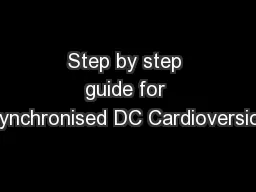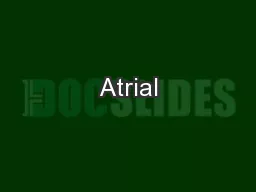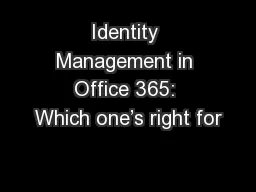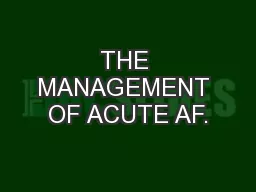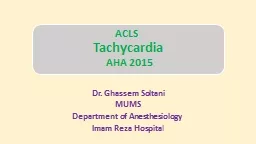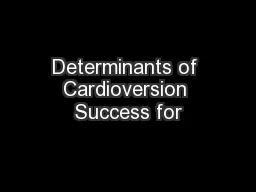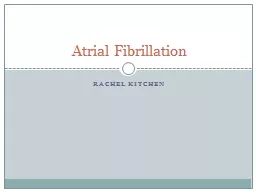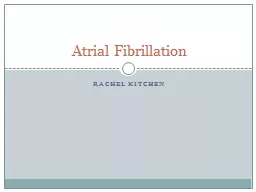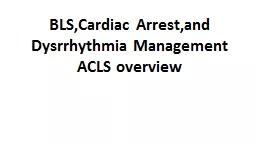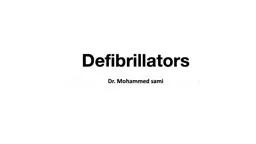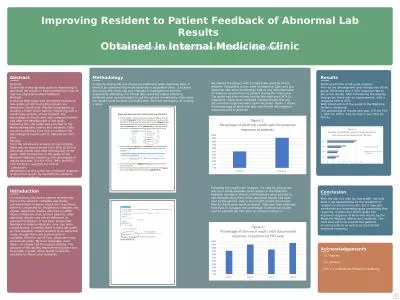PPT-Step by step guide for Synchronised DC Cardioversion
Author : giovanna-bartolotta | Published Date : 2017-01-15
By Martin Grant Student no 40077467 Cardioversion is defined as a synchronised direct current DC discharge and does not apply to ventricular defibrillation or
Presentation Embed Code
Download Presentation
Download Presentation The PPT/PDF document "Step by step guide for Synchronised DC C..." is the property of its rightful owner. Permission is granted to download and print the materials on this website for personal, non-commercial use only, and to display it on your personal computer provided you do not modify the materials and that you retain all copyright notices contained in the materials. By downloading content from our website, you accept the terms of this agreement.
Step by step guide for Synchronised DC Cardioversion: Transcript
Download Rules Of Document
"Step by step guide for Synchronised DC Cardioversion"The content belongs to its owner. You may download and print it for personal use, without modification, and keep all copyright notices. By downloading, you agree to these terms.
Related Documents

